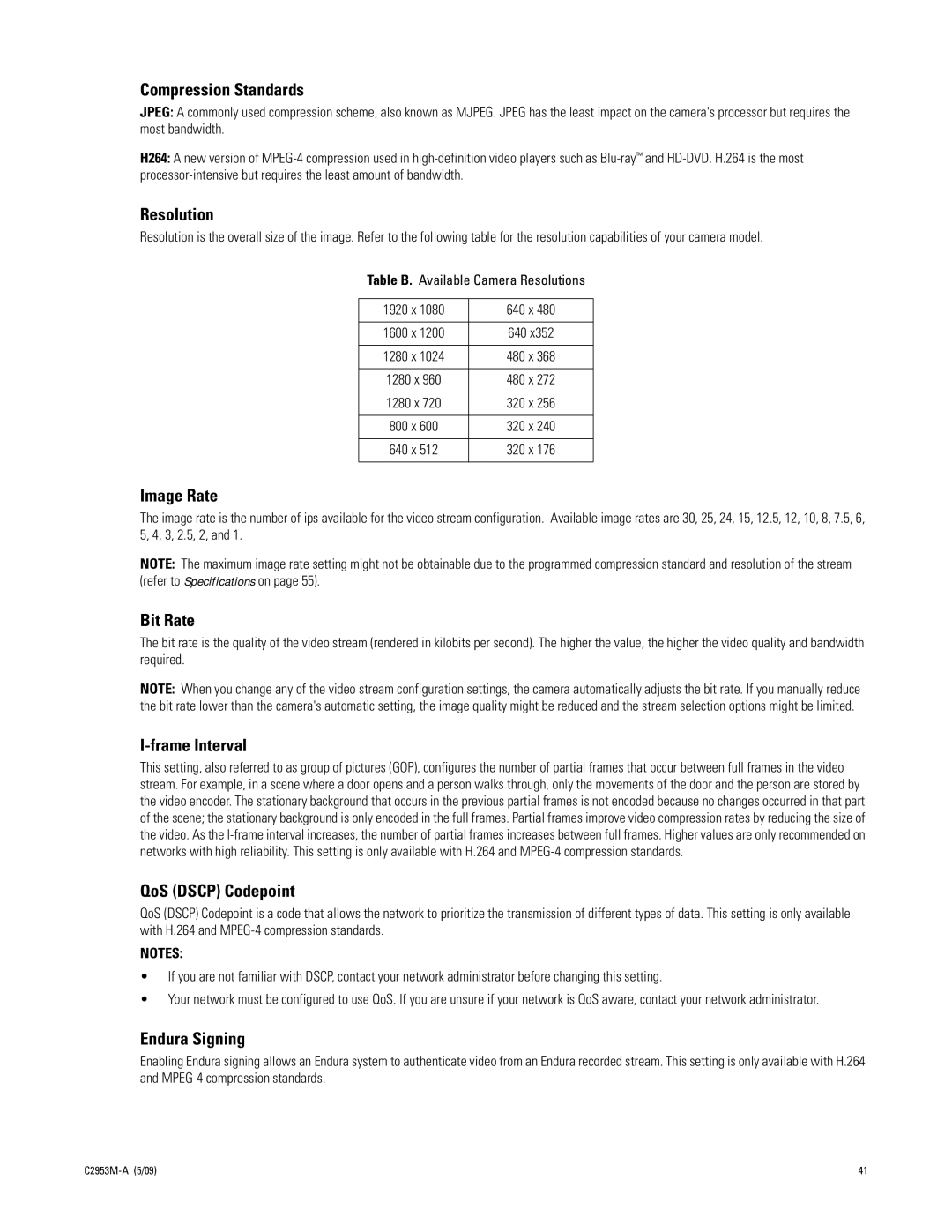Compression Standards
JPEG: A commonly used compression scheme, also known as MJPEG. JPEG has the least impact on the camera's processor but requires the most bandwidth.
H264: A new version of
Resolution
Resolution is the overall size of the image. Refer to the following table for the resolution capabilities of your camera model.
Table B. Available Camera Resolutions
1920 x 1080 | 640 x 480 |
|
|
1600 x 1200 | 640 x352 |
|
|
1280 x 1024 | 480 x 368 |
|
|
1280 x 960 | 480 x 272 |
|
|
1280 x 720 | 320 x 256 |
|
|
800 x 600 | 320 x 240 |
|
|
640 x 512 | 320 x 176 |
|
|
Image Rate
The image rate is the number of ips available for the video stream configuration. Available image rates are 30, 25, 24, 15, 12.5, 12, 10, 8, 7.5, 6, 5, 4, 3, 2.5, 2, and 1.
NOTE: The maximum image rate setting might not be obtainable due to the programmed compression standard and resolution of the stream (refer to Specifications on page 55).
Bit Rate
The bit rate is the quality of the video stream (rendered in kilobits per second). The higher the value, the higher the video quality and bandwidth required.
NOTE: When you change any of the video stream configuration settings, the camera automatically adjusts the bit rate. If you manually reduce the bit rate lower than the camera's automatic setting, the image quality might be reduced and the stream selection options might be limited.
I-frame Interval
This setting, also referred to as group of pictures (GOP), configures the number of partial frames that occur between full frames in the video stream. For example, in a scene where a door opens and a person walks through, only the movements of the door and the person are stored by the video encoder. The stationary background that occurs in the previous partial frames is not encoded because no changes occurred in that part of the scene; the stationary background is only encoded in the full frames. Partial frames improve video compression rates by reducing the size of the video. As the
QoS (DSCP) Codepoint
QoS (DSCP) Codepoint is a code that allows the network to prioritize the transmission of different types of data. This setting is only available with H.264 and
NOTES:
•If you are not familiar with DSCP, contact your network administrator before changing this setting.
•Your network must be configured to use QoS. If you are unsure if your network is QoS aware, contact your network administrator.
Endura Signing
Enabling Endura signing allows an Endura system to authenticate video from an Endura recorded stream. This setting is only available with H.264 and
41 |
